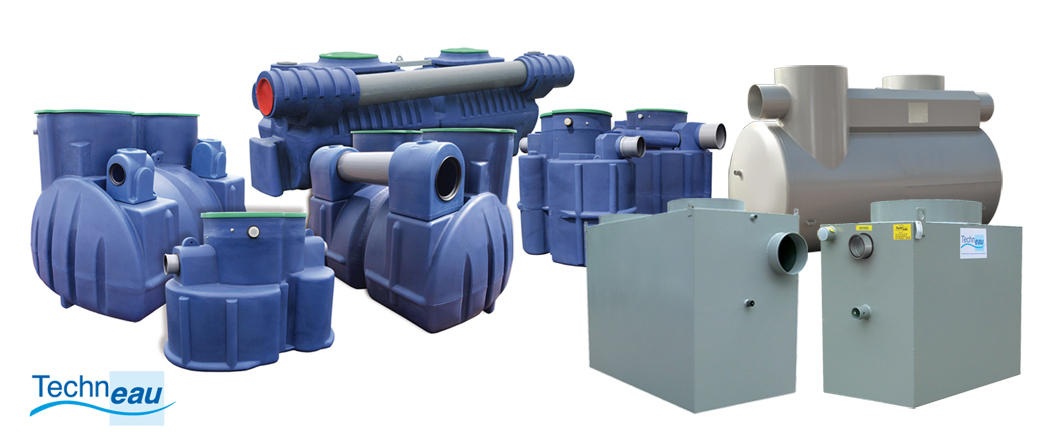
Introduction
Oil separators allow trapping by density difference, free oil specific gravity of 0.85 (light liquids) present in storm water runoff.
Standards NF and CE
The realization of oil separators shall be subject to the standard NF EN 858.
- NF EN 858-1
Principles for the design, performance and testing, marking and quality control.
- NF EN 858-2
Installation for separating light liquids.
Operation
The oil separators’ operating is based on the density difference between the elements present within the separator.
Light liquids, density 0.85, rise to the surface while heavy materials, density 1, settle to the bottom of the unit.
Useful volumes
The working volume of unit is effective water volume (the amount of water below the outlet pipe level).
| Useful volume sludge trap The minimum working volume of sludge is defined according to the NF EN858-1 : Vdeb = 100 x TN Vdeb = Useful in sludge volume l TN = Nominal size in l/s | Useful volume separator The useful volume of the separator: Vsep = 90 x TN Vsep = Useful volume separator in l TN = Nominal size in l/s |
Recommendations
Beware of undersized separators:
The observation of a correlation between the effective volume of the compartment separator and purification performance highlights, in under 90 seconds dwell time, the phenomenon of re-release of hydrocarbons occurs.
The volume is not important enough to:
- Store decanted oil
- Provide a flow rate less than 0.09 m / s
- Avoid creating preferential currents.
Too much oil separators with sludge are bombs
In case of oil pollution, you could be held liable by the authorities if it is found that the pollution was caused by an undersized oil separator.
Compositions
Sludge Compartment, located upstream of the separation chamber is designed to trap the heavy solids (sludge).
Separator The separator compartment or separation chamber allows free oil to rise to the surface. It serves as storage for recovered oil.
The by-pass An oil separator with bypass can absorb very high flows during storms, about 5 times its rated speed. A nozzle can only handle the expected nominal rate.
Automatic closure device Each separator is equipped with an automatic closure device intended to prevent any discharge into the environment. Its operating principle is also based on the density difference between water (density 1) and the light liquid (density 0.85). Thus automatic float valve floats in water but sinks in oil. When the oil layer is thick enough, the output of the separator is closed.
The coalescent lamellar cell A coalescing system is used to improve the treatment efficiency of the apparatus. This method allows obtaining a discharge level of less than 5 mg / l. The effluent passes from bottom to top, boosting flotation of free hydrocarbon density 0.85. The oil was suspended in water particles stick on the back of the slices and form an oil film which migrates from the bottom upwards.
Ranges
Techneau offers 4 ranges of oil separators :
- Polyethylene HydroPE
- Painted steel HydroBAC
- Painted steel HydroGD
- Polyester PolyGD

Lundi - Jeudi 8h-12h | 13h30-17h / Vendredi 8h-12h | 13h-16h
Retrouvez-nous sur :